#Eliza MacArthur
Text










The Brightling Beetles Do Halloween
Walter dressed as a homicidal maniac. They look just like everyone else. (Except Walter looks like a homicidal maniac, but shhh, don’t tell him).
I do not remember if I posted the original “fuzzy bugs” where I accidentally set the style at 60k. One of the originals, named Walter, now appears in a forthcoming book by Eliza MacArthur. Walter is very excited about this.
If I didn’t post them, let me know & I’m happy to bombard this tumblr with “cute fuzzy bugs who like buttercups” (the original prompt).
#ai art#ai artwork#midjourney#halloween#cute creatures#fuzzy bugs#fluffy bugs#Walter and friends#brightling beetles#Eliza MacArthur#feel free to enjoy these and use them#but kindly please don’t use the ‘brightling beetle’ part#or use them for any OC or RP visuals named ‘Walter’#thank you! enjoy the art just don’t take my friends book character
2 notes
·
View notes
Text
instagram
0 notes
Note
Can i get some nonfiction book recs
Sure!
The Murder of Jesus, John MacArthur
The Holiness of God, R. C. Sproul
The Doctrine of Balaam, C. R. Cali
Let Me Be A Woman, Elisabeth Elliott
The Christian in Complete Armor, William Gurnall
A Basket of Summer Fruit, Susannah Spurgeon
Grace: God's Unmerited Favor, Charles Spurgeon
Seeking Allah, Finding Jesus, Nabeel Qureshi
The Hiding Place, Corrie Ten Boom
Through Gates of Splendor, Elisabeth Elliott
Wife no. 19, Anne Eliza Young
Troublemaker, Leah Remini
The God Makers, Decker & Hunt
Why I Left the Amish, Saloma Miller Furlong
Feminists Say the Darndest Things, Mike Adams didn't kill himself
Incidents in the Life of a Slave Girl, Harriet Jacobs
Finding Me, Michelle Knight (absolutely NOT for everybody, look up what happened to her first because this book is brutal)
16 notes
·
View notes
Photo
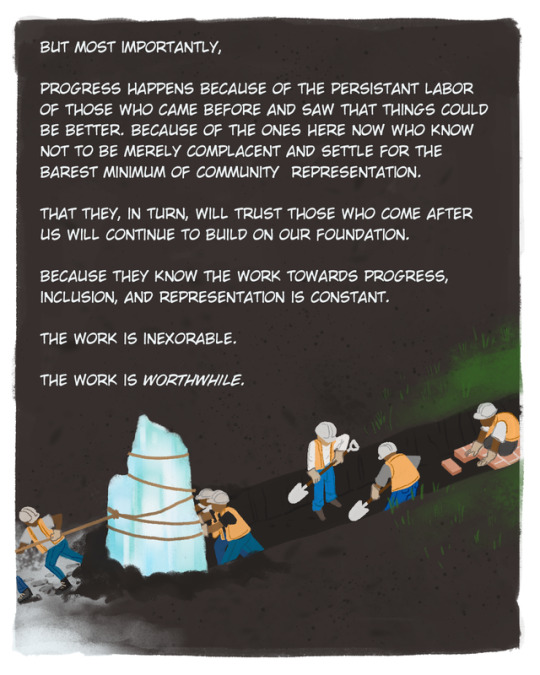
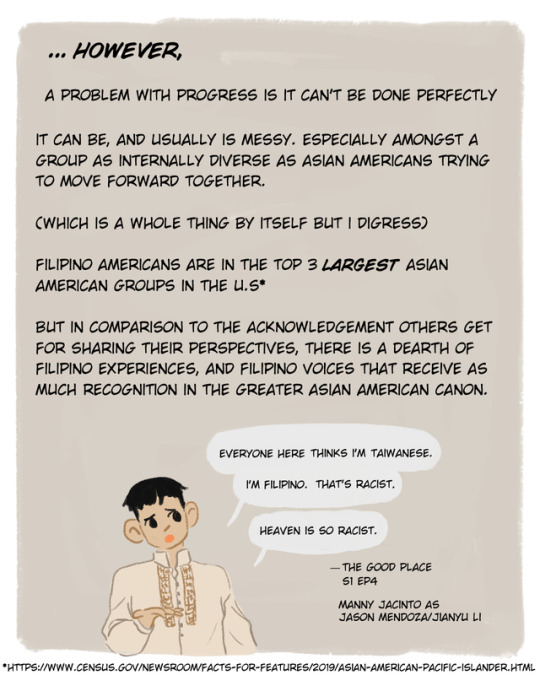

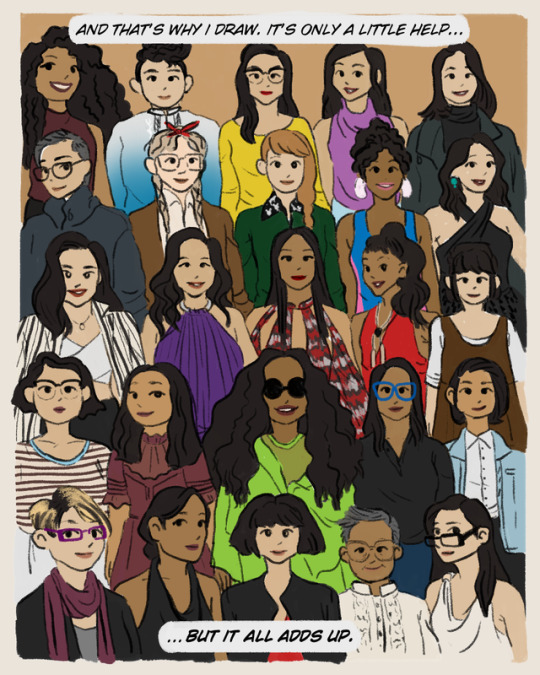
Filipino-American History Month Days 7 & 8
i’m so tired, drawing 25 people was more difficult than I thought, writing cohesively is extra hard, i’m two days behind now, help me rico j. puno
also my avalanche/glacier analogy is so stretched out, but i love my awkward word picture child
*Dingdong Dantes is an actor in the Philippines, I just like many punny names punnier, and alliterative.
x-posted instagram/twitter
And now for the rundown on the very last page. Starting from the top row, left to right;
Starting with Row 1, L to R:
Asia Jackson Actress and YouTube content creator
Alison dela Cruz Theater artist, cultural organizer, and educator
Anna Akana Actress and YouTube content creator
Jennifer Paz Actress, artist, producer (voice of Lapis Lazuli on Steven Universe)
Ashly Perez Writer, producer (commonly known for being a development partner at Buzzfeed)
Row 2, L to R
Shakira Sison Award-winning essayist, fictionist, and poet. Writes weekly column for Rappler.com on gender issues, culture, politics, and immigration.
Lynda Barry Graphic novelist, cartoonist, educator; 2019 MacArthur Foundation Genius Award
Alyssa Wong Writer for Overwatch comics, current Marvel writer for Wave of Agents of Atlas
Shameless Maya Producer, writer, artist, YouTube content creator
Ivory Aquino Actress (screen & stage); known for her role as Cecilia Chung in When We Rise
Row 3, L to R
Rachelle Ann Go Singer, international musical theater actress (played Eliza Schuyler in Hamilton)
DeeDee Magno Actress, singer, notably for her time in the pop group The Party; (voice of Pearl on Steven Universe)
Geena Rocero Supermodel, TED talk speaker, transgender advocate; founded Gender Proud, a media production company that tells stories of the transgender community worldwide to elevate justice and equality.
Shelby Rabara Actress, dancer (voice of Peridot on Steven Universe)
Charlyne Yi Actress, comedian, musician, and writer. (voice of Ruby on Steven Universe, and Chloe on We Bare Bears)
Row 4, L to R
Jay Som DIY and bedroom-pop singer, songwriter, multi-instrumentalist and producer.
Ella Jay Basco Actress, niece to Dante Basco (Derek Basco is her father); casted as Cassandra Cain/Batgirl for upcoming DC series Birds of Prey
H.E.R (Having Everything Revealed) Grammy Award-winning musician
Elaine Dolalas Producer, co-host in This Filipino-American Life Podcast
Paola Mardo Producer, host and creator of Long Distance Radio podcast
Row 5, L to R
Melinda L. de Jesus Scholar, professor, artist, writer; authored Pinay Power: Peminist Critical Theory, and Peminology
Diane Paragas director, current film award-winning Yellow Rose is about immigration, and the Filipino-American experience ask for a showing in a city near you
Eva Noblezada Actress, star of Diane Paragas’ Yellow Rose; plays Eurydice in Hadestown
Karín San Juan-Aguilar Scholar, professor, writer, editor of the acclaimed anthology, The State of Asian America: Activism and Resistance in the 1990s
Rin Chupeco writer of young adult fiction, best known for her The Bone Witch and The Girl from the Well series.
#FAHM#FAHM2019#Filipino American#filipino american history month#pinay#FilAm#Fil Am#Asian#Asian American#illustration#comic#comics
5 notes
·
View notes
Text
Hamilton: An American Musical
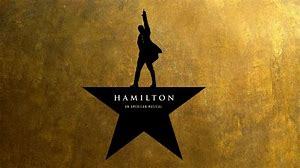
Hamilton: An American Musical premiered on February 12, 2015, in The Public Theatre in New York City. The musical received 16 Tony nominations, and won 11 in 2016, including ‘Best Musical’. The musical also won the 2016 Grammy Award for ‘Best Musical Theatre Album’, and the 2016 Pulitzer Prize for Drama. Many of the actors have also won various awards, for instance, Leslie Odom Jr, who played Aaron Burr, Phillipa Soo, who played Eliza Schuyler Hamilton, Daveed Diggs, played Marquis de Lafayette, as well as Thomas Jefferson, and Renée Elise Goldsberry, who played Angelica Schuyler Church, and of course, Lin-Manuel Miranda, who starred as Alexander Hamilton.
The musical has two acts, telling the story of Alexander Hamilton (a founding father of America, and America’s first Secretary of the Treasury) through major events in his life, as well as America’s history. It starts off in the beginning of his life, where he first arrived in America, to the end of his life. The musical includes characters such as Marquis de Lafayette, Aaron Burr, John Laurens, Hercules Mulligan, Elizabeth Schuyler Hamilton, Peggy Schuyler and Angelica Schuyler Church, Philip Hamilton, and the former presidents, George Washington, James Madison, and Thomas Jefferson.
Lin-Manuel Miranda is an American composer, lyricist, actor, playwright, and television producer, best known for writing and starring in the Broadway musicals, ‘In The Heights’ and ‘Hamilton’. He was born on January 16, 1980, in New York City, though he has Puerto Rican ancestry. Miranda started composing in 2002, where he started working on ‘In The Heights’, which was nominated for thirteen Tony Awards, and won four. He later went on to co-compose ‘Bring it On: The Musical’ in 2011. Miranda also wrote the music for Moana. He has had many other theatrical and fil and television appearances. Miranda has won a Pulitzer Prize, three Tony Awards, three Grammy Awards, an Emmy Awarad, a MacArthur Fellowship, and a Kennedy Center Honour in 2018.
While Lin-Manuel Miranda was on vacation in 2008, he read Ron Cernow’s biography of Alexander Hamilton, inspired, he wrote a rap about Alexander Hamilton, which he performed for the White House Evening of Poetry, Music, and the Spoken Word, on May 12, 2009. From then he spent a year writing and revising the song ‘My Shot’ from the musical. By 2012, he had an extended set of pieces based on the life of Alexander Hamilton. It took Lin-Manuel Miranda six years to write the entire musical.
#hamilton#alexander hamilton#john laurens#marquis de lafayette#eliza hamilton#angelica schuyler#peggy schuyler#thomas jefferson#james madison#George washington#lin-manuel miranda#musical#review#in the heights#history of musical
2 notes
·
View notes
Text
Ocean-based actions can close gaps in climate change mitigation
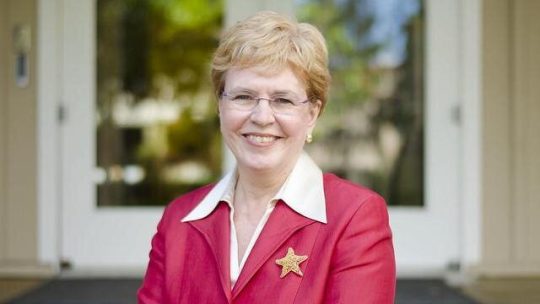
Ocean-based actions have greater potential to fill in gaps in climate change mitigation than previously appreciated, an Oregon State University scientist and two co-authors explain in a paper published today in Science.
The article by OSU distinguished professor Jane Lubchenco and her collaborators aims to connect the dots between two new international reports, one highlighting the devastating impact of climate change on the ocean, the other an analysis of ocean-related solutions to climate change.
The paper by Lubchenco and the reports by the International Panel on Climate Change, issued today in Monaco and New York, and the High Level Panel for a Sustainable Ocean Economy, released Tuesday in New York at a meeting Lubchenco presided over, are among the key elements of international Climate Week.
Climate Week began Sept. 20 and includes marches and other activities around the world, with a focus on the United Nations and other sites in New York.
The key takeaway of the reports and the paper, Lubchenco said, is that we can now think of the ocean as a source of solutions, not just a victim of climate change. It is clear that the ocean has been bearing the brunt of climate change to date, but untapped ocean-related approaches to fighting climate change could play a large role in capping climate change at 1.5 degrees Celsius above pre-Industrial Age levels as called for in the 2016 Paris Agreement.
Limiting warming to 1.5 degrees would maintain substantial proportions of ecosystems while also benefiting health and economies, scientists say.
"The IPCC Special Report on the Ocean and Cryosphere paints a gloomy picture of the impacts of climate change on the ocean, ocean ecosystems and people, and an even more dismal portrayal of what is in store unless we get serious about reducing greenhouse gas emissions rapidly," said Lubchenco, a marine ecologist in the OSU College of Science and a former administrator of the National Oceanic and Atmospheric Administration. "But the new analysis conducted for the High Level Panel for a Sustainable Ocean Economy concludes that ocean-based activities have significant potential to help us actually reach the 1.5-degree Celsius target by 2050—much greater potential than anyone realized."
Lubchenco, one of the world's most highly cited ecologists with expertise in the ocean, climate change and interactions between the environment and human well-being, was not directly involved in writing the IPCC Special Report on the Ocean and Cryosphere in a Changing Climate.
She is, though, among the scheduled speakers today in New York at a press briefing, an event being called "Blue Leaders: Call to Action on Ocean and Climate." Other speakers include heads of state and 16-year-old Swedish activist Greta Thunberg.
This week's other key report, the one organized by the High Level Panel for a Sustainable Ocean Economy, analyzes five categories of ocean-based activities to evaluate their potential to reduce, sequester and store emissions.
The categories are ocean-based renewable energy; ocean-based transport; protecting and restoring marine ecosystems (especially "blue carbon" ecosystems like mangroves, salt marshes and seagrass beds); shifting diets to include more protein from seafood and less land-animal protein; and storing carbon in the seabed.
"The report concludes that the first four of those can be deployed right away, but seabed carbon storage will require additional research," said Lubchenco, who co-chaired the expert group that advises the panel and oversaw the report. "Combined, there is the potential for ocean-based activities to provide as much as 21% of the emission reductions needed to achieve the 1.5-degree target by 2050. That means in addition to the options for reducing emissions that we already knew about, we now have some new and powerful tools to deploy."
The High Level Panel features 14 heads of state who work together to adopt and promote policies and practices associated with a sustainable ocean economy. Led by the leaders of Norway and Palau, the panel also has representation from Portugal, Ghana, Namibia, Kenya, Chile, Mexico, Jamaica, Canada, Japan, Indonesia, Fiji and Australia.
"Collectively, those nations represent 30% of the world's coastlines and ocean territories, 20% of the fisheries' catches, and 20% of the shipping," Lubchenco said. "This report is the first from the group; 16 others will follow."
Along with its report, the High Level Panel also released a Call to Ocean-Based Climate Action, challenging nations, businesses and society in general to adopt or promote activities that will help achieve the 1.5-degree goal.
The call includes six types of actions: investing in nature-based climate solutions; harnessing ocean-based renewable energy; decarbonizing ocean industries; securing sustainable food for the future; advancing the deployment of carbon capture and storage; and expanding ocean observation and research.
"The report from the International Panel on Climate Change basically says, 'the problem is bad and likely to get much worse unless we act'; the High Level Panel report says, 'here's what we can do, it will matter, and take hope,'" Lubchenco said. "Our paper in Science aims to connect the dots between those two."
The Earth has already warmed by 1 degree Celsius, sea levels have risen more than 8 inches since 1880, Arctic sea ice is declining at the fastest rate in 1,500 years, and extreme weather events are becoming more common and damaging.
The actions the High Level Panel calls for are "ambitious," Lubchenco said, "but we argue that they are necessary, could pay major dividends toward closing the emissions gap in coming decades, and achieve other co-benefits along the way."
Joining Lubchenco as co-authors are Ove Hoegh-Guldberg of the University of Queensland and Eliza Northrop of the World Resources Institute. They write that for "far too long, the ocean has been mostly absent from policy discussions about reducing carbon emissions and meeting the challenges of climate change. Ocean-based actions provide increased hope that reaching the Paris Agreement of 1.5 degrees C might be possible, along with addressing other societal challenges."Lubchenco served as an undersecretary of commerce for oceans and atmosphere within the Obama administration and later as the State Department's first science envoy for the ocean.
In 2018, she received the Vannevar Bush Award from the National Science Board, and in 2017, she received the National Academy of Sciences' most prestigious award, the Public Welfare Medal.
She is also a MacArthur Fellow and a member of the National Academy of Sciences.
Provided by: Oregon State University
More information: O. Hoegh-Guldberg et al. "The ocean is key to achieving climate and societal goals. Science (2019). science.sciencemag.org/cgi/doi … 1126/science.aaz4390
Image: Jane Lubchenco.
Credit: Oregon State University
Read the full article
0 notes
Text
Ocean-based actions can close gaps in climate change mitigation
https://sciencespies.com/environment/ocean-based-actions-can-close-gaps-in-climate-change-mitigation/
Ocean-based actions can close gaps in climate change mitigation
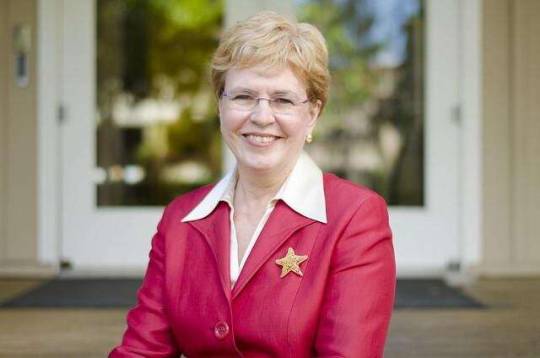

Jane Lubchenco. Credit: Oregon State University
More
Ocean-based actions have greater potential to fill in gaps in climate change mitigation than previously appreciated, an Oregon State University scientist and two co-authors explain in a paper published today in Science.
The article by OSU distinguished professor Jane Lubchenco and her collaborators aims to connect the dots between two new international reports, one highlighting the devastating impact of climate change on the ocean, the other an analysis of ocean-related solutions to climate change.
The paper by Lubchenco and the reports by the International Panel on Climate Change, issued today in Monaco and New York, and the High Level Panel for a Sustainable Ocean Economy, released Tuesday in New York at a meeting Lubchenco presided over, are among the key elements of international Climate Week.
Climate Week began Sept. 20 and includes marches and other activities around the world, with a focus on the United Nations and other sites in New York.
The key takeaway of the reports and the paper, Lubchenco said, is that we can now think of the ocean as a source of solutions, not just a victim of climate change. It is clear that the ocean has been bearing the brunt of climate change to date, but untapped ocean-related approaches to fighting climate change could play a large role in capping climate change at 1.5 degrees Celsius above pre-Industrial Age levels as called for in the 2016 Paris Agreement.
Limiting warming to 1.5 degrees would maintain substantial proportions of ecosystems while also benefiting health and economies, scientists say.
“The IPCC Special Report on the Ocean and Cryosphere paints a gloomy picture of the impacts of climate change on the ocean, ocean ecosystems and people, and an even more dismal portrayal of what is in store unless we get serious about reducing greenhouse gas emissions rapidly,” said Lubchenco, a marine ecologist in the OSU College of Science and a former administrator of the National Oceanic and Atmospheric Administration. “But the new analysis conducted for the High Level Panel for a Sustainable Ocean Economy concludes that ocean-based activities have significant potential to help us actually reach the 1.5-degree Celsius target by 2050—much greater potential than anyone realized.”
Lubchenco, one of the world’s most highly cited ecologists with expertise in the ocean, climate change and interactions between the environment and human well-being, was not directly involved in writing the IPCC Special Report on the Ocean and Cryosphere in a Changing Climate.
She is, though, among the scheduled speakers today in New York at a press briefing, an event being called “Blue Leaders: Call to Action on Ocean and Climate.” Other speakers include heads of state and 16-year-old Swedish activist Greta Thunberg.
This week’s other key report, the one organized by the High Level Panel for a Sustainable Ocean Economy, analyzes five categories of ocean-based activities to evaluate their potential to reduce, sequester and store emissions.
The categories are ocean-based renewable energy; ocean-based transport; protecting and restoring marine ecosystems (especially “blue carbon” ecosystems like mangroves, salt marshes and seagrass beds); shifting diets to include more protein from seafood and less land-animal protein; and storing carbon in the seabed.
“The report concludes that the first four of those can be deployed right away, but seabed carbon storage will require additional research,” said Lubchenco, who co-chaired the expert group that advises the panel and oversaw the report. “Combined, there is the potential for ocean-based activities to provide as much as 21% of the emission reductions needed to achieve the 1.5-degree target by 2050. That means in addition to the options for reducing emissions that we already knew about, we now have some new and powerful tools to deploy.”
The High Level Panel features 14 heads of state who work together to adopt and promote policies and practices associated with a sustainable ocean economy. Led by the leaders of Norway and Palau, the panel also has representation from Portugal, Ghana, Namibia, Kenya, Chile, Mexico, Jamaica, Canada, Japan, Indonesia, Fiji and Australia.
“Collectively, those nations represent 30% of the world’s coastlines and ocean territories, 20% of the fisheries’ catches, and 20% of the shipping,” Lubchenco said. “This report is the first from the group; 16 others will follow.”
Along with its report, the High Level Panel also released a Call to Ocean-Based Climate Action, challenging nations, businesses and society in general to adopt or promote activities that will help achieve the 1.5-degree goal.
The call includes six types of actions: investing in nature-based climate solutions; harnessing ocean-based renewable energy; decarbonizing ocean industries; securing sustainable food for the future; advancing the deployment of carbon capture and storage; and expanding ocean observation and research.
“The report from the International Panel on Climate Change basically says, ‘the problem is bad and likely to get much worse unless we act’; the High Level Panel report says, ‘here’s what we can do, it will matter, and take hope,'” Lubchenco said. “Our paper in Science aims to connect the dots between those two.”
The Earth has already warmed by 1 degree Celsius, sea levels have risen more than 8 inches since 1880, Arctic sea ice is declining at the fastest rate in 1,500 years, and extreme weather events are becoming more common and damaging.
The actions the High Level Panel calls for are “ambitious,” Lubchenco said, “but we argue that they are necessary, could pay major dividends toward closing the emissions gap in coming decades, and achieve other co-benefits along the way.”
Joining Lubchenco as co-authors are Ove Hoegh-Guldberg of the University of Queensland and Eliza Northrop of the World Resources Institute. They write that for “far too long, the ocean has been mostly absent from policy discussions about reducing carbon emissions and meeting the challenges of climate change. Ocean-based actions provide increased hope that reaching the Paris Agreement of 1.5 degrees C might be possible, along with addressing other societal challenges.”Lubchenco served as an undersecretary of commerce for oceans and atmosphere within the Obama administration and later as the State Department’s first science envoy for the ocean.
In 2018, she received the Vannevar Bush Award from the National Science Board, and in 2017, she received the National Academy of Sciences’ most prestigious award, the Public Welfare Medal.
She is also a MacArthur Fellow and a member of the National Academy of Sciences.
Explore further
Study finds big increase in ocean carbon dioxide absorption along West Antarctic Peninsula
More information:
O. Hoegh-Guldberg at University of Queensland in St Lucia, QLD, Australia el al., “The ocean is key to achieving climate and societal goals,” Science (2019). science.sciencemag.org/cgi/doi … 1126/science.aaz4390
Provided by
Oregon State University
Citation:
Ocean-based actions can close gaps in climate change mitigation (2019, September 25)
retrieved 25 September 2019
from https://phys.org/news/2019-09-ocean-based-actions-gaps-climate-mitigation.html
This document is subject to copyright. Apart from any fair dealing for the purpose of private study or research, no
part may be reproduced without the written permission. The content is provided for information purposes only.
#Environment
0 notes
Text
i see a wagon, i must jump onto it!
fairwood:
donovan reese --- matthew daddario; douchegang, about to move across country, failing outta school/life
uriah eriksson --- herman tommeraas; nice guy who frequently finishes last, ab*sive father, living with wren
lennon nixon --- hailey baldwin; control freak, president of student affairs
rowan garcia --- camila mendes; lesbihonest, hopeless romantic
ivan gregson --- gregg sulkin; future mlb player, workaholic
duke quinton --- drew roy; jailbird, good boy gone bad
marcella dolan --- cierra ramirez; future brain surgeon, fears commitment
siobhan jamison --- stefanie scott; cheerleader, she’s engaged and in hs so priorities
samir bishara --- zayn malik; dj, bad boy rep, quiet af, lowkey asshole
wren williams --- brett dalton; artist, painter, the grumpiest man alive
atlas macarthur --- kj apa; rich kid, eternal fuck up, unluckiest
royals:
andres remigio --- grant gustin; RIP, royal duke of portugal
penelope de oliveira --- megan fox; RIP, royal duchess of portugal
dimitri fontaine --- alexander skarsgard; RIP, king of france
audrea adair --- dove cameron; queen of england, tryna fix her mistakes
declan de oliveira --- nicholas hoult; royal duke of portugal, wedlock baby
augustine de oliveira --- brant daugherty; royal duke of portugal, work is life
esmeralda de oliveira --- jessica lowndes; royal duchess of portugal, head in the clouds, literally wtf is wrong with her
diego remigio --- cole sprouse; royal duke of spain, forever travelling, thinks everyone is nuts
rosamaria gaxholli --- eliza taylor; princess of italy, family is nuts, baby mama drama
ignacio gaxholli --- dominic sherwood; king of italy, in love with his sister, nuts
eloise rothschild --- poppy drayton; servant of france, dropped title for love, widow
vladimir fontaine --- lucas till; prince of france, engaged to tiziana
forties:
bobby frederick --- drew van acker; capt of us marines, homebody, highkey asshole, lowkey hero
eugene gray --- dylan o’brien; spy for us government, con-artist
rosemary wade --- amanda seyfried; nanny, do what she want, nuts
jesse gordon --- drew roy; RIP, us army specialist, i killed an angel
southern:
bella alexandre --- vanessa hudgens; southern belle
gregory smithson --- max theiriot; son of the mayor, cowboy
bar:
mia bautista --- cierra ramirez; good girl gone bad, kind of a drunk
ezekiel papadakis --- matthew daddario; bartender, should be a bouncer, angry
misc:
oliver westley --- andrew garfield; journalist, will put him somewhere
miller radcliffe --- joe keery; riverdale, jughead jones
richard linemann --- brett dalton; maid in manhattan, ny senator
adriana de souza --- emeraude toubia; jersey girl, donut shop girl
megan raynor --- madelaine petsch; hollywood, paige townsen
faces (bolded wanna use the mostest):
keith powers
carter jenkins
dianna agron
megan fox
madelaine petsch (fairwood)
dua lipa
nico tortorella (AM DYING TO USE HIM SO COMETH AT ME)
2 notes
·
View notes
Text
Hamilton Off-Broadway in February, 2015 with original cast memberstop left to right: Phillipa Too as Eliza Hamilton, Leslie Odom Jr. as Aaron Burr,Bottom left to right: Okieriete Onaodowan , Lin-Manuel Miranda, Daveed Diggs, Anthony Ramos. See July 3
Les Blancs by Lorraine Hansberry. See July 2
Amadeus, see July 16
We Are Freestyle Love Supreme, see July 17
Carousel. See July 10
Heroes of the Fourth Turning . See July 18
Below is the day-by-day calendar of “theater openings”* in July, 2020. The big news is the release of “Hamilton” online at Disney Plus — and (less hyped) the “Freestyle Love Supreme” documentary on Hulu — but in truth Lin-Manuel Miranda’s shows are not all that’s exciting this month in the world of online theater — a world in which “online” and “theater” have been synonymous since physical theaters were shut down in March (though there are small signs this may be changing; see July 13). And most of the other shows don’t require subscriptions.
Among the scheduled delights are acclaimed plays by Pulitzer finalist Will Arbery (July 18) and MacArthur “genius” grant winner Samuel D. Hunter (July 11), as well as a new Richard Nelson Apple Family play (July 1) and a new documentary play about frontline medical workers by Jessica Blank and Erik Jensen, creators of The Exonerated and Coal Country (July 8.) There a couple of inventive substitutions for the usual summer theater festivals.
Since so many shows are being put together at the last minute — sometimes not announced until the very day of their launch .. and there also have been fairly frequent last-minute postponements/cancellations/replacements — I will be updating/filling in this preview guide every day, and highlighting the offerings each new day with the link up top. This calendar as of this moment offers a glimpse of what’s in store. Come back day by day for a better look.
Here are some ongoing series that have proven to be reliable sources of art and entertainment.
Four offer live performances (often called readings) of original plays:
The Homebound Project
Livelabs: One Acts from MCC
Play-PerView
Viral Monologues from 24 Hour Plays
Play-PerView makes an exception this month to its original plays with what counts as a coup — the live reading of the Pulitzer finalist play “Heroes of the Fourth Turning” (which was supposed to debut last month but was postponed, as were a good number of productions due to the Black Lives Matter protests.)
A fifth offers live readings of classics and recent favorites: Plays in the House, Stars in the House’s twice weekly matinees and now Plays in the House Teen Edition.
Three offer recordings of previous (glorious) stage productions.
Metropolitan Opera
National Theatre at Home
The Shows Must Go On from Andrew Lloyd Webber
For details about these and other ongoing series, check out my post Where To Get Your Theater Fix Online (which lists, for example, the many long-running online sites such as BroadwayHD and Marquee TV that offer video-capture recordings of shows that were on stage)
All performances are free unless otherwise noted, although almost all hope for a donation (either to themselves or to a designated charity.)
*My definition of theater for the purposes of this calendar generally does not extend to variety shows, cast reunions, galas, panel discussions, documentaries, classes, interviews — all of which are in abundance this month, many worth checking out. My focus here is on creative storytelling in performance. (I make an occasional exception for a high-profile Netathon,involving many theater artists.)
A reminder that this calendar lists when the shows “open.” Some are live and available only for that one performance. Others are available for a week or weeks afterward or longer.
July 1
Die Mommie Die
Plays in the House
Launches at 2 p.m. Available for four days.
In this latest of Stars in the House’s Wednesday matinees, Charles Busch is joined by BD Wong, Willie Garson, Brandon Contreras, Jennifer Cody and Ruth Williamson in this reading of his campy 1999 melodrama Die, Mommie, Die!, a mix of Aeschylus and Bette Davis.Directed and narrated by Carl Andress.
The Book of Job Project
Theater of War
Launches at 4 p.m. live only
The latest from Bryan Doerries terrific community-oriented theater using classic texts (best-known for Antigone in Ferguson), is a dramatic reading of The Book of Job as a catalyst for discussion about injustice during the COVID-19 pandemic. Featuring performances by Jeffrey Wright, Frankie Faison, Kimberly Hebert, David Strathairn, David Zayas, and Public Advocate Jumaane Williams.
And So We Come Forth
Apple Family Productions
Launches at 7:30 pm. Available for 8 weeks
The Apple Family, a dramatic series of plays which first appeared 10 years ago, returned last April with the premiere of a play written especially for Zoom, What Do We Need to Talk About? Now this second Zoom play, And So We Come Forth is set in early July 2020, amidst massive protests against injustice and racism in our country, as well as the anxious easing of a worldwide lockdown.
Richard II, part 1
Shakespeare@ Home
Shostakovich’s The Nose
Metropolitan Opera
Launches at 7:30 p.m., available for 23 hours
It all begins with an absurd scenario: A hapless Russian bureaucrat wakes up one morning to discover that his nose has gone missing. He eventually locates his fugitive facial feature, which has been masquerading as a human being, but has no luck reattaching it. Based on a satirical short story by Nikolai Gogol
Mary’s Mixology
The Tank
Launches at 8 p.m.
Kev Berry’s monologue about his first year on the wagon. “What does it mean for a gay man to give up liquid courage?”
Borders
Queerly Festival
Launches at 8:30 p.m. live
Boaz and George meet on Grindr. They are attracted to one another instantly and want to meet in person, but something prevents them from doing so. One lives in Israel, the other- in Lebanon. Also Friday at 3 p.m.
The festival also offers three short plays tonight starting at 7 p.m.: Before We Can Make a Final Decision, Backup Plan, and an excerpt from “I Tried” by Veronica Garza, “my one woman show that I’ve been working on about the men I slept with in my struggles to be straight”
July 2
Les Blancs
National Theater
Launches 2 p.m. Available until July 9
In this final play by Lorraine Hansberry (A Raisin in the Sun), in a production directed by Yael Farber in 2016, a society prepares to drive out its colonial present and claim an independent future. Tshembe, returned home from England for his father’s funeral, finds himself in the eye of the storm.
Hypochondriac!
Theater in Quarantine
Launches at
7 p.m. and 9 p.m.
The first installment of a new adaptation of Molière’s The Imaginary Invalid by David McGee and Joshua William Gelb.Featuring Gelb, Jessie Shelton, and Alex Hawthorne
Bizet’s Carmen
Metropolitan Opera
Launches at 7:30 p.m., available for 23 hours
The tale of the irresistible and free-spirited Gypsy, whose fatal attraction with the jealous soldier Don José burns too hot for them to control.
July 3
youtube
youtube
Hamilton
Disney Plus
Available from this date on.
A live-capture of the stage production with the original Broadway cast, which was shot over three days in June 2016. A Disney Plus subscription is required. One way to look at this is that it costs $6.99 to see “Hamilton” and you get a month to watch everything else on the service (which includes titles familiar to theatergoers though not the same versions — Frozen, The Lion King, Aladdin.)
Here is my video review of “Hamilton” in 2015:
youtube
Here is my review of Hamilton on Broadway in 2019
Mozart’s Don Giovanni
Metropolitan Opera
Launches at 7:30 p.m., available for 23 hours
Mozart’s 1747 melodic version of the Don Juan myth, with two baritones starring alongside one another as the title Lothario and his faithful yet conflicted servant, Leporello, as well as three memorable female roles—multifaceted women who both suffer the Don’s abuses and plot their revenge.
July 4
Donizetti’s Don Pasquale
Metropolitan Opera
Launches at 7:30 p.m., available for 23 hours
Beverly Sills stars in her final performance as a clever young widow, who goes up against a crusty old bachelor, no match for her wiles.
A Capitol Fourth
PBS
8 – 9:30 p.m.
The annual July 4 celebration will feature new performances from locations across the country, as well as highlights from the concert’s 40-year history. Among the performers are theater artists Brian Stokes Mitchell, Kelli O’Hara, Mandy Gonzalez and Renée Fleming
July 5
Rossini’s La Donna del Lago
Metropolitan Opera
Launches at 7:30 p.m. available for 23 hours
The retelling of Sir Walter Scott’s shadowy epic of clan warfare in 16th-century Scotland, which is at heart a classic love triangle.
July 6
Summer Stock Streaming Festival
Mint Theater
Available through July 19
Archival recordings of three old and forgotten plays that the Mint resurrected (which is what they do; I saw two of these on stage and found them fascinating.)
“The Fatal Weakness” written in 1946 by George Kelly: Society woman Ollie Espenshade, after 28 years of marriage is still an incurable romantic (her fatal weakness). Perhaps discovering that her husband is a lying cheat will cure her?
“The New Morality” written in 1911 by Harold Chapin who died at age 29 in World War I: A comedy set aboard a houseboat on a fashionable reach of the Thames in 1911, in which brazen Betty Jones restores dignity to her household and harmony to her marriage.
“Women Without Men,” written in 1938 by Hazel Ellis: An all-female cast tells this humor-laced tale set in the teacher’s lounge of a private girls boarding school in Ireland in the 1930’s, where young new teacher Jean Wade, popular with her students but at odds with her quarrelsome colleagues, is accused of sabotaging her main antagonist.
July 8
Unveiled
Premiere Stages at Keane
Separate live showings at 3 p.m. and 7 p.m.
Tickets $10
Rohina Malik plays five Muslim women navigating complex social issues in a post 9/11 world. Following the screening, Ms. Malik will host a live Q & A with all ticket holders.
The Line
Public Theater
Launches at 7:30 p.m. Available until August 4.
This new documentary play by Jessica Blank & Erik Jensen (The Exonerated, Coal Country) presents the experiences of frontline medical workers in New York and their battle to save lives in a system built to serve the bottom line. The cast includes Santino Fontana, Arjun Gupta, John Ortiz, Alison Pill ,Nicholas Pinnock , Jamey Sheridan and Lorraine Toussaint
July 9
The Deep Blue Sea
National Theatre
Launches at 2 p.m. available until July 16
In this play by Terence Rattigan, Hester Collyer (Helen McCrory) is found by her neighbours in the aftermath of a failed suicide attempt, which leads to the story of her tempestuous affair with a former RAF pilot and the breakdown of her marriage to a High Court judge.
July 10
Rodgers and Hammerstein’s Carousel
Lincoln Center
Launches at 8 p.m.
The latest of Lincoln Center’s Broadway Fridays (rescheduled from June 5) features a free digital stream of its concert production of this Rodgers and Hammerstein musical featuring the New York Philharmonic and starring Kelli O’Hara, Nathan Gunn, Stephanie Blythe, Shuler Hensley, Jason Danieley,Jessie Mueller, Kate Burton, Tony winner John Cullum, and New York City Ballet dancers Robert Fairchild and Tiler Peck.
Freedom Riders
An online reading of Richard Allen and Taran Gray’s award-winning Freedom Riders: The Civil Rights Musical
July 11
The Few
Play-PerView
Written and directed by Samuel D. Hunter, featuring Gideon Glick: Four years ago, Bryan abandoned his labor of love: a newspaper for truckers. Now he’s returned—with no word of where he’s been—and things have changed. His former lover is filled with rage, his new coworker is filled with incessant adoration, and his paper is filled with personal ads.
July 12
Hershey Felder: Beethoven
Based on Memories of Beethoven: Out of the House of Black-Robed Spaniards, a first-hand account by Dr. Gerhard von Breuning.
July 13
Plays about memory loss
Food for Thought Productions
1:30 p.m. — 3:30
Louise Lasser and Bob Dishey star in this in-person event of three short plays (Arthur Miller’s “I Can’t Remember Anything,” Robert Anderson’s “I’m Herbert” and Daniel Rose’s “Adolf Eichmann in Jerusalem”) held at The Coffee House Club, 22 West 44th Street, available first come, first served by calling 646-366-9340 or emailing info@foodforthoughtproductions. However, “if you’d rather watch from home, you can request the Zoom link.” staged reading of short plays about memory loss starring Tony nominee Bob Dishy and Louise Lasse
Richard II, part 1
Public Theater/WNYC
8 p.m.
Saheem Ali directs this radio adaptation of Richard II, the Bard’s take on how the title monarch lost his crown. André Holland (Moonlight) stars, and the supporting cast includes Oscar winner Estelle Parsons, Tony winner Phylicia Rashad and Tony nominee John Douglas Thompson.
The production will be broadcast in four installments from Monday, July 13 through Thursday, July 16 at 8 p.m. ET nightly on WNYC. Listeners in the New York tri-state area can tune in at 93.9 FM or AM 820. It will also stream nationwide at WNYC.org.
July 14
Richard II, part 2
Public Theater/WNYC
8 p.m.
Saheem Ali directs this radio adaptation of Richard II, the Bard’s take on how the title monarch lost his crown
July 15
The Homebound Project
Available through July 19
The fourth edition
The Droll
Bard of the Gate
Launches at 7 p.m
Meg Miroshnik’s play is the second offering in Paula Vogel’s play series,
Richard II, part 3
Public Theater/WNYC
8 p.m.
Saheem Ali directs this radio adaptation of Richard II, the Bard’s take on how the title monarch lost his crown. licia Rashad as the Duchess of Gloucester.
July 16
Amadeus
National Theatre
Launches 2 p.m. Available until July 23
Lucian Msamati portrays the envious court composer Antonio
Salieri who is envious of the obnoxious genius Wolfgang Amadeus Mozart
In this popular play by Peter Shaffer that was turned into an Oscar-winning film.
Richard II, part 4
Public Theater/WNYC
8 p.m.
Saheem Ali directs this radio adaptation of Richard II, the Bard’s take on how the title monarch lost his crown.
July 17
“We Are Freestyle Love Supreme”
Hulu
A documentary about the improv theater company co-founded by Lin-Manuel Miranda.
Virtual Fire Island Dance Festival
he first-ever stream in the event’s 26-year history will feature world premieres of three new pieces and three beloved festival favorites.
July 18
Heroes of the Fourth Turning
Play PerView
Will Arbery’s 2020 Pulitzer Prize finalist will now take place July 18 at 8 PM ET on Play-PerView after postponing the June 13 reading in solidarity with Black Lives Matter
July 20
Project Sing Out!
Playbill
Launches at 7 p.m.
A one-night-only livestreamed event featuring musical performances, spoken word and special appearances from a variety of Broadway and TV’s biggest names, including Audra McDonald, Chirta Rivera, Don Cheadle, Vanessa Willams.
July 21
Coriolanus
Bedlam
July 25
Knife to the Heart
Play-PerView
In this play by Stan Zimmerman and Christian McLaughlin, ulie Ann and Marshall are expecting their first baby—with Marshall’s mother Rhonda hovering over them and Julie Ann’s fellow teacher Deacon providing moral support. Everything’s going smoothly until Julie Ann accidentally learns just what exactly the bris Rhonda’s planning involves, and all good will and politeness dissolve.
July 2020 Online Theater Openings: Hamilton, PLUS. What’s streaming day by day Below is the day-by-day calendar of “theater openings”* in July, 2020. The big news is the release of "Hamilton" online at Disney Plus -- and (less hyped) the "Freestyle Love Supreme" documentary on Hulu -- but in truth Lin-Manuel Miranda's shows are not all that's exciting this month in the world of online theater -- a world in which "online" and "theater" have been synonymous since physical theaters were shut down in March (though there are small signs this may be changing; see July 13).
0 notes
Text
Jane Austen’s “Fanny”
Q: Where do you stand on the debate in academia over whether Jane Austen winkingly used the name “Fanny Price” for her Mansfield Park heroine?
A: There’s no chance that Jane Austen was slyly winking at her readers when she used that name in Mansfield Park (1814).
The British use of “fanny” to mean the female genitalia (here in the US it means the buttocks) didn’t appear until Austen had been dead for 20 years.
And if she had been familiar with this use of “fanny,” she wouldn’t have used it for such a shy, upright, and conscientious character as Fanny Price.
The feminine name “Fanny,” a diminutive of “Frances,” was very common in England at the time Austen was writing. Before the slang usages came along, “Fanny” was no more suggestive than “Annie.”
“Frances” was the feminine version of the men’s name “Francis,” and it used to be very popular in both Britain and the United States.
Many famous and admired women were officially named “Frances” and known by the pet name “Fanny” from the 16th through the early 20th centuries.
Popular authors included Fanny Burney (1752-1840), and Fanny Trollope (1779-1863), Anthony’s mother. Well-known actresses included Fanny Kemble (1809-93) and Fanny Brice (1891-1951).
All of them had been given the formal name “Frances” except for Brice, who was originally named Fania Borach.
However, “Fannie” was the original name of the American cooking expert and food writer Fannie Farmer (1857-1915). Her name was borrowed with a different spelling in 1919 by the candy company Fanny Farmer.
In his book Names and Naming Patterns in England, 1538-1700, Scott Smith-Bannister writes that “Frances” held a mean ranking of 17.8 in a selected list of women’s names that were popular during that 162-year period.
At its peak during that period, “Frances” was ranked 13, Smith-Bannister says. (In case you’re interested, the names generally ranked ahead of Frances in Smith-Banister’s statistics were Elizabeth, Mary, Anne, Margaret, Jane, Alice, Joan, Agnes, Catherine, Dorothy, Isabel, Elinor, and Ellen.)
In “New Influences on Naming Patterns in Victorian Britain,” a 2016 paper, Amy M. Hasfjord classifies ���Frances” and “Fanny” among England’s “classic” names.
Her statistical ranking places “Frances” 13th among names given to girl babies born between 1825 and 1840.
However, Hasfjord says both “Frances” and “Fanny” dropped in popularity during the period from 1885 to 1900.
In the United States, meanwhile, surveys of the popularity of “Fanny” show that the use of the name dwindled from a peak in 1880 to relatively uncommon in 1940.
In both cases—British and American usage—it seems that the name “Fanny” dropped in popularity just as the slang word “fanny” increased in common usage.
In British English, “fanny” came to mean “the vulva or vagina” in the late 1830s, according to The Random House Historical Dictionary of American Slang.
Jonathan Lighter, author of the slang dictionary, cites a collection entitled Bawdy Songs of the Music Hall (1835-40): “I’ve got a little fanny / That with hairs is overspread.”
The Oxford English Dictionary’s earliest example is from an 1879 issue of a pornographic magazine published in London, The Pearl: “You shan’t look at my fanny for nothing.”
And a British slang dictionary published in 1889 defined “fanny” as “the fem. pud.” (the female pudenda).
This genital usage is “always rare” in the US, Random House says. As an exception, both the OED and Random House cite the American writer Erica Jong, who used it in her novel Fanny (1980):
“ ‘Madam Fanny,’ says he, obliging me, but with the same ironick Tone. ‘D’ye know what that means in the Vulgar Tongue? … It means the Fanny-Fair … the Divine Monosyllable, the Precious Pudendum.”
However, Jong’s novel is an inventive retelling of John Cleland’s bawdy English classic Memoirs of a Woman of Pleasure (1748-49), popularly known as Fanny Hill after its main character.
We suspect that Jong’s imaginative take on Fanny Hill as well as speculation, since debunked, by the slang etymologist Eric Partridge may be responsible for the myth in academia that “fanny” meant the vagina in Cleland’s time.
In the original, 1937 edition of his slang dictionary, Partridge wrote that the use of “fanny” for the “female pudenda” was from “ca. 1860,” but was “perhaps ex Fanny, the ‘heroine’ of John Cleland’s Memoirs of Fanny Hill [sic], 1749.”
However, the 2015 edition of Partridge’s dictionary notes that Fanny Hill’s “publication in 1749 is about a hundred years before ‘fanny’ came to be used in this sense.” (From The New Partridge Dictionary of Slang and Unconventional English, edited by Tom Dalzell and Terry Victor.)
Two other slang dictionaries—those by Lighter and Jonathon Green—call the reader’s attention to Fanny Hill but date the slang usage from the mid-1830s or later.
So why mention Fanny Hill in connection with the usage? The only apparent reason is that the novel’s leading character is promiscuous and is named “Fanny.” Cleland might just as well have called his protagonist “Eliza Hill.”
Nevertheless a handful of academic writers have strained to establish an 18th-century history for the usage, based on guesswork or intuition from hindsight. Their claims have been often repeated, despite the lack of any direct evidence.
A pair of literary scholars demolished their case piece by piece in 2011.
“In fact the evidence is to the contrary,” Patrick Spedding and James Lambert write in their paper “Fanny Hill, Lord Fanny, and the Myth of Metonymy,” published in the journal Studies in Philology.
They write, for example, that the terms “Fanny Fair” and “Fanny the fair” were used in 18th-century songs, “but never in an obscene context or as a synonym for vagina.”
We won’t detail their arguments, but they painstakingly document actual historical uses of the term and conclude that “fanny” was not used as a sexual term until 1837, citing the same book of music-hall songs mentioned above.
“Consequently,” they write, “it is highly unlikely that any of the fictional Fannys were named with the intention of suggesting the female sexual organs, however specified or identified (vagina, genitalia, pudenda, vulva, mons veneris, or mons pubis), or the male or female buttocks.”
“Current usage rather than eighteenth-century usage is the basis of the interpretation of fanny as a sexual term,” they write.
The milder, American sense of “fanny,” meaning the derrière, apparently dates from World War I, according to Random House. Here is the slang dictionary’s earliest example:
“They made us all get in a circle and stoop over while a guy ran around and hit us on the—never mind where—with a strap—I believe they call the game ‘Bat the Fanny’ and they sure did bat me.” (From a diary entry in a regimental history, 12th U.S. Infantry, 1798-1918, published in 1919.)
The OED’s earliest example is from the hit Broadway play The Front Page (1928), by Ben Hecht and Charles Macarthur. Here’s the OED citation, which we’ve expanded for context:
“KRUGER. (To MOLLIE, who is in the swivel chair in front of the desk) What’s the idea, Mollie? Can’t you flop somewhere else?
“MURPHY. Yah, parking her fanny in here like it was her house.”
This milder usage soon caught on in Britain. The term was used in the same way by the British playwright Noël Coward in Private Lives (1930): “You’d fallen on your fanny a few moments before.”
Subsequently, the OED has examples of the “buttocks” sense of the word by both British and American writers.
Here’s the American poet Ezra Pound in The Pisan Cantos (1948): “And three small boys on three bicycles / smacked her young fanny in passing.”
And here’s the British novelist Nevil Shute in Trustee From the Toolroom (1960): “I’d never be able to think of John and Jo again if we just sat tight on our fannies and did nothing.”
In short, although there are exceptions, the OED still characterizes the “fanny” that means genitals as “chiefly British English” and the one that means the butt as “chiefly US.”
In case you’re wondering, the OED also labels the noun “fanny pack” (first recorded in 1971) as a North American usage, the equivalent of the British “bumbag” (1951).
Oxford’s definition, found under “bumbag,” is “a small bag or pouch incorporated in a belt worn round the waist or across the shoulder (orig. designed for skiers and worn at the back).”
A similar term, “fanny belt” was in American use almost a decade before “fanny pack” and today means the same.
Oxford’s earliest citation is from the journal American Speech in 1963, when the term had a more limited definition: “Fanny belt … slang for the belt on which ski patrol men carry their first aid kit. A term used by ski patrols.”
Help support the Grammarphobia Blog with your donation.
And check out our books about the English language.
from Blog – Grammarphobia http://www.grammarphobia.com/blog/2017/02/fanny.html
0 notes